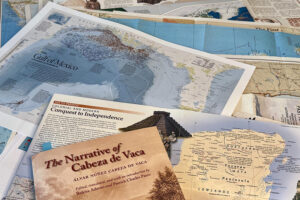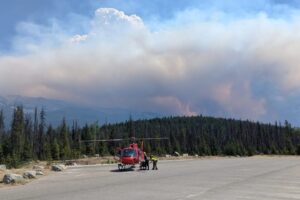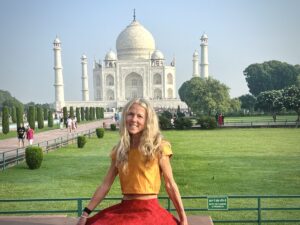In recent weeks, we’ve offered a list of 500 adventure films to stream for free, here, here, here, here and here. But not every great outdoor film is free, and there are some not-to-be-missed genre classics that you can rent online for just a few bucks through iTunes Movies, Amazon Prime, YouTube, Vimeo or other sources. Here are some of the best of them. They run the gamut from tragedy to comedy, endurance to sweetness. A few others, like Crossing the Ice, Grandpa’s in the Tuff Shed and Berserk in the Antarctic, we wanted to include but couldn’t, since they aren’t available to stream. But if you ever get the chance to watch them, don’t miss it.

Alone Across Australia: In 2001, Aussie Jon Muir walked 2,900km across Australia in 128 days, accompanied only by his little Jack Russell terrier. This astonishing long-distance trek was entirely self-supported: He found his own water and scrounged his own food, including scavenging dead — though not overly ripe — cattle. Muir has also climbed Everest and skied to the North Pole, but this desert crossing was the pinnacle feat of his career, movingly conveyed in this self-shot film.

Touching the Void: Most real climbers find Hollywood mountaineering films, from The Eiger Sanction to Cliffhanger, a total hoot. This is one of the rare ones that gets it right. Based on Joe Simpson’s excellent book, it recounts the saga of a South American climb gone very, very wrong and turning into a survival epic. It combines reenactments with contemporary interviews from the main characters. Although there’s no cost for this YouTube stream, if you live in the U.S., it’s worth it paying a little to watch the high-resolution version on Amazon Prime. If you haven’t seen the film yet, you owe it to yourself. You’ll never listen to Boney M in the same way again.

Solo: Also known as Solo: Lost at Sea, it recounts Andrew MacAuley’s 2007 attempt to become the first person to kayak across the Tasman Sea from Australia to New Zealand. Unlike Touching the Void, this film does not have a happy ending, but it unblinkingly documents an extreme adventure very nearly brought off. Unforgettable.

Unbranded: A group of young Texans adopts 16 feral mustangs and takes them on a long and difficult ride from Mexico to Canada. A classic of long-distance adventure. Its soft, not-in-your-face message introduces the plight of the thousands of these wild horses still roaming free through the American West.

Wild Bill’s Run: To rent, contact the filmmaker at mikevscholtz@gmail.com. It’s worth the trouble: This documentary of an early 1970s attempt to snowmobile from Minnesota to Russia via the Arctic is wacky, hilarious at times, totally gripping. About two-thirds the way through the film, it blindsides you with a totally unexpected twist. Interviews with the crusty old participants combine with archival footage from the expedition. Wild Bill Cooper himself is an unforgettable character, a big fish in a small pond who left his imprint on everyone even before he mysteriously disappeared. Such a naive adventure simply could not happen these days: There is too much information online to set off this half-cocked. And how many expeditions publicize their launch by deliberately blowing someone up?

Encounters at the End of the World: Werner Herzog likes his eccentrics, and he finds plenty of them at science stations in Antarctica. There’s the woman whose parlour trick is stuffing herself into a suitcase. Then there’s the introverted penguin researcher, awkwardly attempting to explain penguin homosexuality. Or the insane penguin, wandering inland as Herzog’s camera lingers forever on its senseless retreat. There’s also some truly otherworldly undersea footage. If the Amazon Prime link doesn’t work for you, it’s also in iTunes Movies.

Asiemut: About 15 years ago, a likeable young Quebec couple cycled 8,000km from Mongolia to India. Their love of filmmaking equaled their passion for exploration, and the footage often looks like they had a camera crew with them. They didn’t. Countless times, in this pre-drone era, they made the effort to hike far away from their bikes, set up the tripod for a grand overview, walk back to their bikes, cycle repeatedly through the scene, then hike back to retrieve the tripod and camera. They worked all the angles, they edited carefully and they created a charming story of self-discovery through physical effort. If you want a model about how to properly film an adventure, this is it. The film is also available to rent from Canada’s National Film Board.

Surviving the Outback: Another excellent self-filmed effort. Survival instructor Michael Atkinson places himself in the historic predicament of two stranded German aviators from 1932 to see if his skills will allow him to reach civilization through the rugged Kimberley region of Western Australia. Apart from elaborate film equipment, he carries just a small bag of the same antique gear that the aviators had with them. He visits key locations relevant to the story, such as the cave where local Aborigines finally found the aviators, and Atkinson interviews one of the still-living rescuers. The historical angle adds an extra dimension to this adventure, especially since the inspiring event is so small and obscure: He didn’t just reach for some obvious character, like Ernest Shackleton.

The Trail of Genghis Khan: Also on iTunes. Tim Cope embarks on a three-year journey on horseback from Mongolia to Hungary, along the route of the great Mongol leader. Cope is remarkably mature and culturally sensitive for someone in his twenties, and his fluent Russian allows him to interact non-superficially with the people he meets along the way. The talented Australian later wrote an equally precocious book about his adventure. This exceptional film made you wonder what Cope would do for an encore. Unfortunately, three-year journeys are so disruptive to every other aspect of life that few adventurers do more than one of them — and after a three-year trip, a mere two-month expedition must feel like camping in your backyard. Cope seems to have settled into guiding tours to Mongolia and mining material from this first masterpiece of a journey.

Free Solo: It’s impossible not to include this Oscar-winning documentary of Alex Honnold’s ropeless, sub-four-hour ascent of Freerider (5.13a) on El Capitan. Although the climax is the climb itself, the film is also a character study of the sort of guy who’d even consider attempting something so radical. We see Honnold’s obsessive training, until he feels that he has every section of the route dialed. Then Honnold has to find the right head space — not easy — before he sets foot on the rock. Meanwhile, the filmmakers grapple with ethical decisions: If he falls, should they continue filming? Think of some past landmark adventure: Chichester sailing around the world, Hilary and Tenzing summiting Everest, Hiram Bingham rediscovering Machu Picchu. Now imagine if a talented crew were there to film every step of the way.






